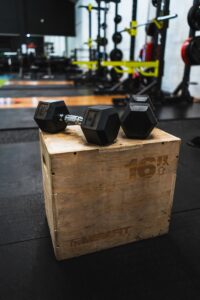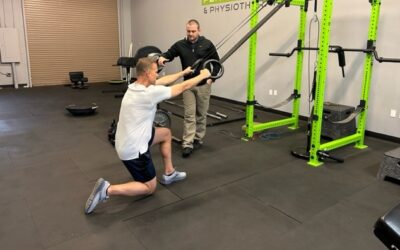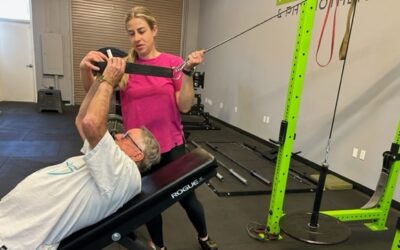It is evident that current athletes are getting bigger, stronger, and faster than in years past.
Do you remember seeing photos of Joe Namath smoking during halftime at a game he was playing in? How long did he spend focusing on proper training for his body development?
You just look at the athletes on the field now and they are absolute physical specimens.
We have Aaron Donald bench pressing over 500 pounds! Lebron James looks like a chiseled-out stone statue that can glide through the air.
It is quite the transition that is being seen all throughout the sports world. The transition to bigger, stronger, and faster doesn’t just start at the highest level of competition. It actually starts far before then when the athletes are in their youth.
One of the main driving factors in the significant increase in athlete development… Strength training.
The Formula Behind Strength Training
Strength training is becoming more prevalent in school settings. High school athletes are typically required to participate in a weight training program. This may have been true for football athletes over the years, but it has grown to encompass athletes in all sports! Strength training is becoming all-inclusive due to the significant benefits that are being seen from undergoing a structured strength training program!
But, is this increased participation in strength training at a young age leading to increased injuries? Parents…especially moms…want to know…
Common Concerns
Q1: I had a friend whose child was deadlifting and he hurt his back. Now I don’t want my child to deadlift because he may hurt himself. Why would I allow my child to participate in strength training if he’s just going to injure himself?
A1: If children are injured during strength training it’s typically due to lack of supervision, lack of individualization of the program, or the child is participating in a program that is not appropriate for the child.
Especially in teenage boys, there can also be an element of letting their ego get the best of them. Once they see their teammate who happens to play the same position lifting more than they are, their competitive nature kicks in. Having direct and appropriate supervision that is educating the athlete as they lift can help curb this enthusiasm/ego lifting.
Q2: What about the risk of stunting my child’s growth?
A2: Weight lifting does not stunt growth. An injury to the growth plate can occur during just about any activity. My brother broke his shoulder at the growth plate after he fell while attempting a trick on his scooter. Fun fact, sports such as gymnastics and baseball are actually at increased risk of epiphyseal injury (growth plate) compared to strength training.
If a child does sustain an injury to their growth plate while weight lifting it’s typically due to improper use of equipment, poor technique, inappropriate weight, or training without a qualified professional.

Benefits of Strength Training
There are many different benefits to strength training. To list a few, strength training leads to
- improved bone density
- improved balance
- increased self-esteem
- improved cardiovascular health and metabolism
The American Academy of Pediatrics, American College of Sports Medicine, National Strength and Conditioning Association, and American Orthopedic Society for Sports Medicine all agree that a supervised strength training program is safe and effective for adolescents. Ensuring a safe and effective training program involves individualized program development. This means that the professional will discuss goals and objectives and take into account age and maturity when developing the program.
Individualized Programs
Let’s talk a little more about the importance of individualized programs. We are currently seeing a spike in strength training in adolescents. Which is great! However – the negative is a lot of these programs are trained in overcrowded gyms and they’re not specific to the individual. Your child could attend a class with 30 other athletes of different sports and at different stages of their careers. The worst part is they’re all doing the same workout. Now that doesn’t make a lot of sense to me. The sport-specific needs of a soccer goalie are very different from a hockey goalie. Even within the same sport, a quarterback has different needs compared to a linebacker. So why are these kids all doing the same exercises?
It is unsafe and unethical to print a ‘master workout’ for ALL football players on a given day.
There are so many ways to individualize a child’s strength training program.
Not only are these athletes’ sports very different, but so are their goals. Appropriate strength training programs take into consideration the participant’s goals. This is why it is important to participate in an individualized, sport-specific training program.

Key Takeaways
- Participating in a well-supervised strength training program has no greater risk than your child participating in any sport (ex. soccer, basketball, or gymnastics).
- Increased strength can improve speed, agility, long jump, etc.
- Strength training programs are being done at all levels now, help your athlete develop their strength, power, and explosiveness just as much as their skill development in their sport.
- No movement is a bad move, as long as the athlete is ready for the movement
- In summary, the benefits of strength training far outweigh the minimal risk of injury.




